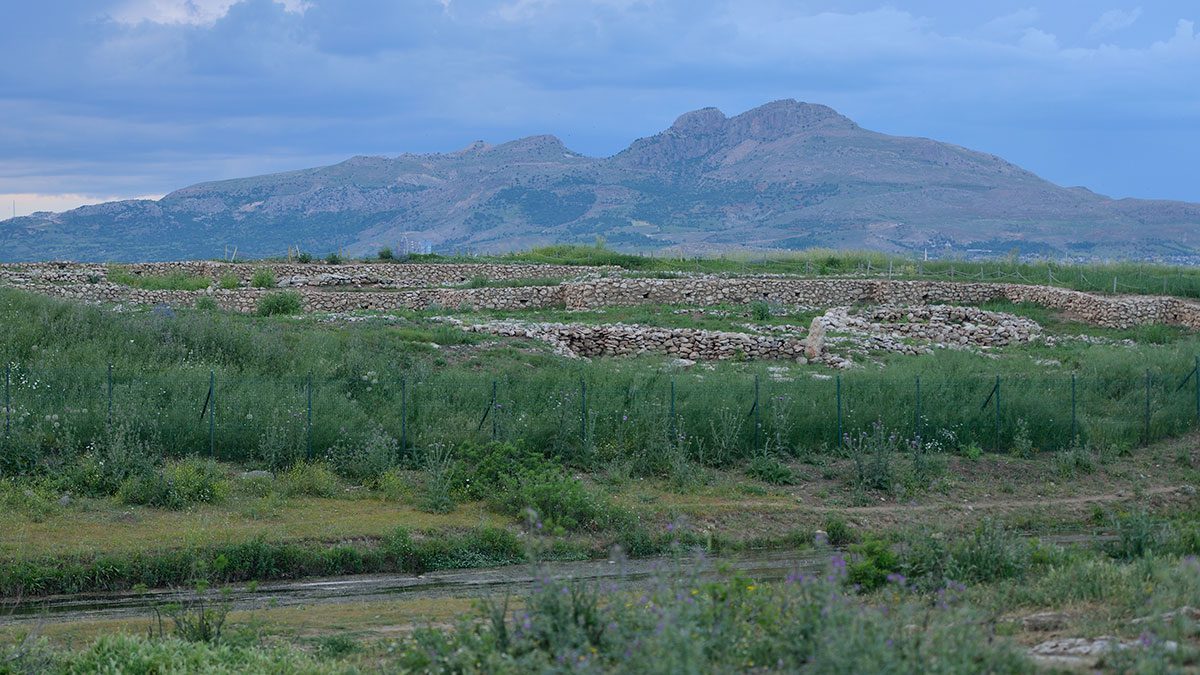The first known revolution took place 9,200 years ago in a Neolithic settlement in eastern Anatolia – present-day Turkey. There are no written records, but we know about it from archeological remains at a site called Çayönü.
Çayönü began about 8800 BC as a settlement of hunters and gatherers. Seeds indicate the start of farming about 8000 BC, followed by sheep rearing about 7300 BC.
The shift to agriculture was accompanied by the rise of a class society. We know this because there were three houses much larger and much better built than all the rest, with verandahs and stone walls and stairs. There was also a large windowless building that served as a temple. The mansions and temple were arranged around an empty space, like a city square. The mansions contained objects that constituted the wealth of the society: blocks of crystal, stone sculptures, sea shells, finely wrought weapons.
The temple also contained weapons – daggers. These daggers were thickly encrusted with blood, most of it human blood. So were the altars and draining funnels. One chamber was piled high with human skulls and bones. The priests clearly had a passion for human sacrifice.
The ordinary houses of the settlement varied in quality. On the western side was an area where the dwellings were especially substandard – a slum.
For hundreds of years this pattern is reproduced. Then there is a sharp break in the archeological record. Suddenly everything changes.
The mansions and the temple are burned down. The area where they stood is turned into a waste dump. The slum also disappears. New housing is erected, built to a standard design. After that no signs of class differences can be detected.
Documenting these findings in 1989, the supervisor of the excavations at Çayönü, Mehmet Özdogan, could find no evidence that the sudden change might have been the result of invasion, war, plague, or natural disaster. The only conceivable cause was social upheaval – revolution.
The new classless society spread rapidly through Anatolia and the Balkans and endured for 3,000 years. Women and men were equal. It was a wholly peaceful society. Not a single skeleton bears signs of murder, nor do any of the wall paintings portray scenes of violence. (Some hunters were killed by animals.)
Of course, life was still hard. And by today’s standards life was short. But life was longer and happier during the period of societies without classes than it was for the common people in the class societies that preceded and followed that period.
The historian Bernhard Brosius has shown this by comparing a classless Stone Age settlement with a later class-divided Early Bronze Age settlement in the same region. The technology at the disposal of the Bronze Age settlement was considerably more advanced. In particular, it had a plow that was over twice as productive as the Neolithic digging stick. Nevertheless, infant mortality was 30% higher there than in the Stone Age settlement, while life expectancy was lower: some people in the Stone Age settlement but no one in the Bronze Age settlement lived into their sixties.
Source: Bernhard Brosius, From Çayönü to Çatalhöyük: Emergence and development of an egalitarian society.



